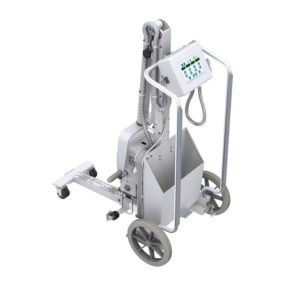

ADVANTAGES OF PORTABLE X-RAY MACHINES

Gone are the days of long waits in emergency rooms for traditional x-rays; instead, portable x-ray machines are becoming increasingly popular, offering unparalleled convenience and comfort, especially for elderly and critically ill patients. In this article, we will explore the numerous advantages of portable x-ray machines and their impact on modern healthcare.
- Speed and Efficiency
One of the most significant advantages of portable x-ray machines is their speed and efficiency. Unlike traditional x-ray machines that often entail waiting times, portable units can produce high-quality images in as little as 20 to 25 minutes. This rapid turnaround time is crucial in emergency situations and can make a substantial difference in patient care.
- Mobility and Flexibility
Portable x-ray machines live up to their name by providing unparalleled mobility and flexibility. These units are designed to be compact and easy to maneuver, allowing healthcare professionals to bring the technology directly to the patient’s bedside. Whether a patient is in the operating room or confined to the emergency department, portable x-ray machines can be effortlessly transported, eliminating the need to move patients to dedicated radiology rooms.
- Versatile Applications
While portable x-ray machines are smaller in size compared to their fixed counterparts, they are incredibly versatile and find applications in various medical settings. You can encounter them not only in hospitals but also in veterinary clinics, dental offices, and radiology centers. This adaptability makes them an invaluable tool for providing timely and efficient diagnostic services across diverse healthcare environments.
- Enhanced Patient Comfort
The convenience and mobility of portable x-ray machines translate into enhanced patient comfort. Patients who are immobile or at high risk during transport benefit greatly from the on-demand imaging services brought directly to them. There’s no need to endure the discomfort of transferring to a dedicated radiology room, especially when dealing with critically ill or elderly individuals.
- Improved Safety and Accessibility
Advancements in portable x-ray technology have resulted in safer and more accessible imaging processes. These machines are designed with patient safety in mind, minimizing radiation exposure while delivering high-quality images. Additionally, the convenience of portability means that patients in areas with limited space or crowded medical facilities can still receive timely and efficient care.
- Remote Imaging
Portable x-ray machines are not limited to hospital settings. In cases where patients are unable to travel to medical facilities, such machines can be transported to their homes with a doctor’s prescription and the assistance of a certified technician. This capability is especially beneficial for homebound patients and those requiring ongoing medical care.
- Cost-Effective
From a cost perspective, portable x-ray machines offer significant advantages. Instead of incurring the logistical and personnel costs associated with transporting patients to traditional x-ray machines, it is often more cost-effective and less hectic to bring the portable machine directly to the patient’s location. This approach saves time, resources, and ultimately reduces the financial burden on both patients and healthcare providers.
In conclusion, portable x-ray machines have transformed the landscape of diagnostic imaging in the healthcare industry. Their speed, mobility, versatility, and patient-centered approach make them an invaluable asset in modern medicine. As technology continues to advance, portable x-ray machines are poised to play an increasingly pivotal role in delivering efficient, cost-effective, and patient-focused diagnostic solutions across a wide range of medical settings. For comprehensive support in medical imaging equipment and services, organizations like Proximus Medical are at the forefront, providing expertise in digital medical imaging, ensuring that healthcare providers have access to the latest advancements in diagnostic technology.



